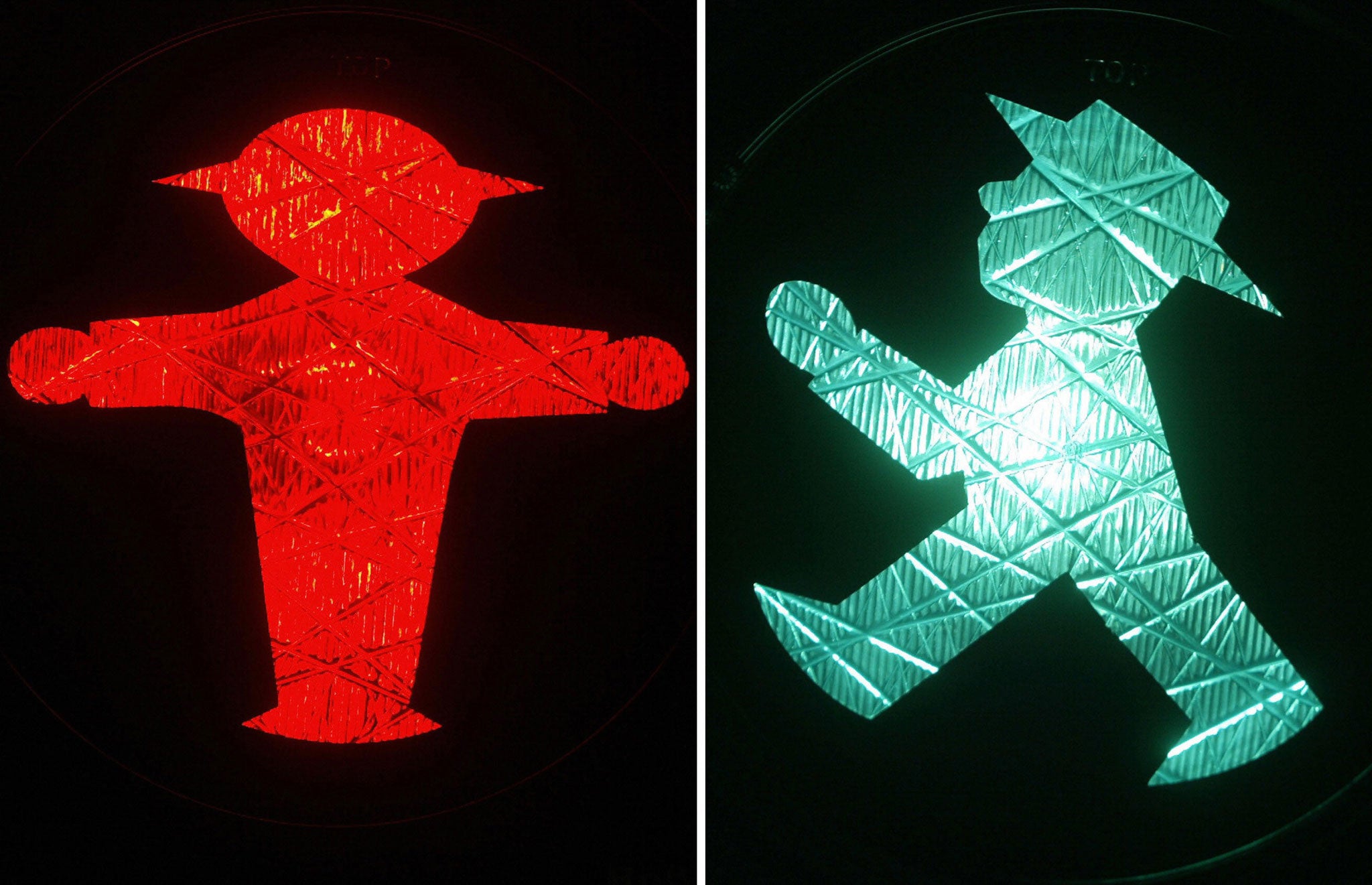Go ahead: Bring back East Germany’s little traffic light man, say researchers
Study suggests that pedestrians respond more quickly to icon of Communist era

Researchers have called for the introduction of former East Germany’s hat-wearing “green man” traffic light figure at pedestrian crossings throughout the European Union after conducting a study that showed pedestrians react to it more quickly than they do to Western crossing signs.
The study, carried out by Bremen University, found that the so-called flat-hat wearing Amplemännchen – which translates as “little traffic light man” – encourages pedestrians to press stop or go buttons at crossings more quickly than Western traffic icons. The figure began life in Communist East Germany 50 years ago.
“Our study shows that the East German Amplemännchen have not just become iconic symbols but are also giving their West German counterparts a run for their money when it comes to signal perceptions,” Bremen University’s Claudia Peschke told the broadcaster Deutsche Welle.
After reunification and the former West Germany’s subsequent takeover of the east, East Germans joked that the Amplemännchen was the only figure to have survived the Communist era. He became a symbol of the term ostalgie, which means nostalgia for the former East Germany and still features as a logo on tourist T-shirts.
To indicate “stop” the Amplemännchen turns red and stands at attention with his arms stretched out at his sides. For “go” he turns green and strides across the road energetically with his left arm swinging forward.
The figure proved so popular after the fall of the Berlin Wall that he was adopted by traffic authorities across West Germany, where in many places he has now replaced his more austere and robotic counterpart used in Western Europe.
Bremen University has said that the results of its study should encourage EU traffic officials to standardise pedestrian-crossing stop and go signs with the introduction of Amplemännchen figures across continental Europe and the UK.
However, it remains unclear whether the university’s recommendations stand any chance of being realised. Markus Heckhausen, the Amplemännchen’s designer who owns the copyright for the figure, told Germany’s Bild newspaper: “It’s a nice idea, but nobody has asked me and I own the copyright.”
Subscribe to Independent Premium to bookmark this article
Want to bookmark your favourite articles and stories to read or reference later? Start your Independent Premium subscription today.

Join our commenting forum
Join thought-provoking conversations, follow other Independent readers and see their replies